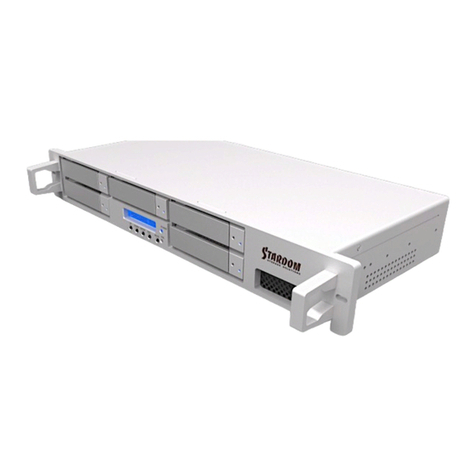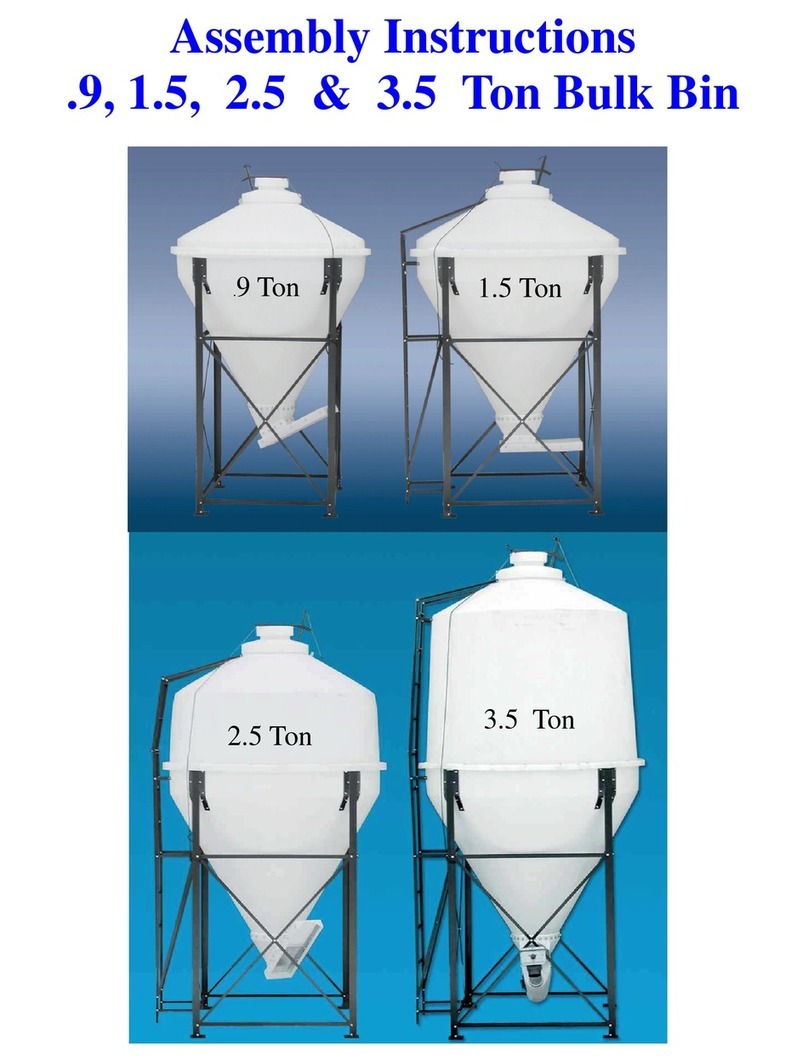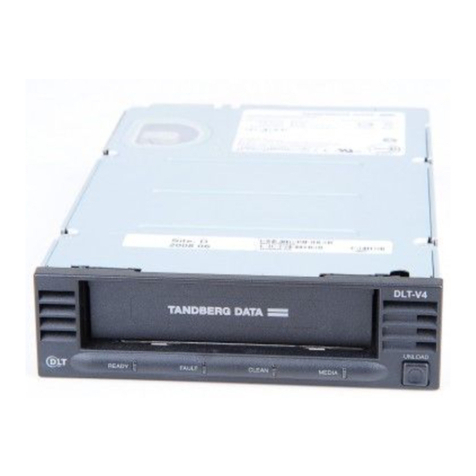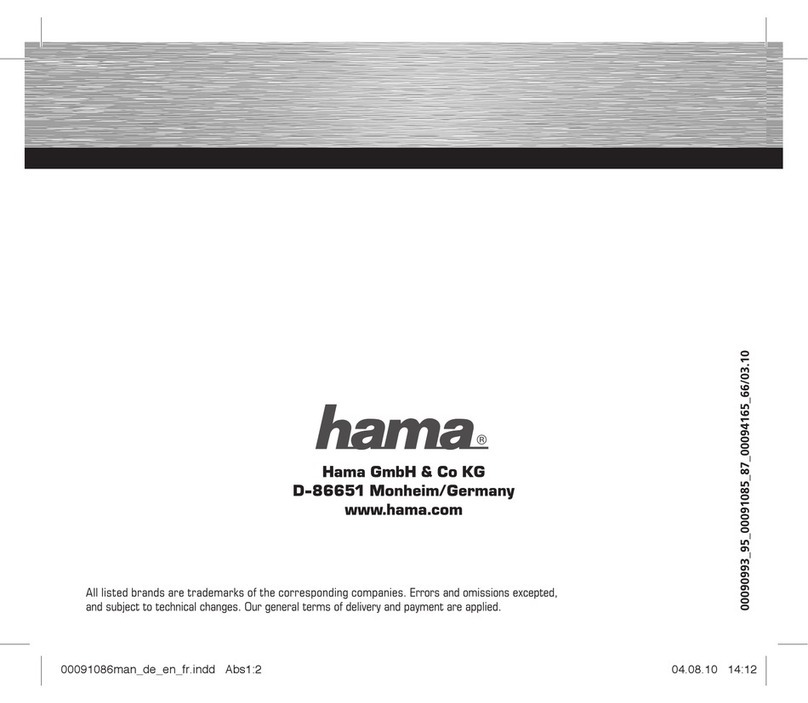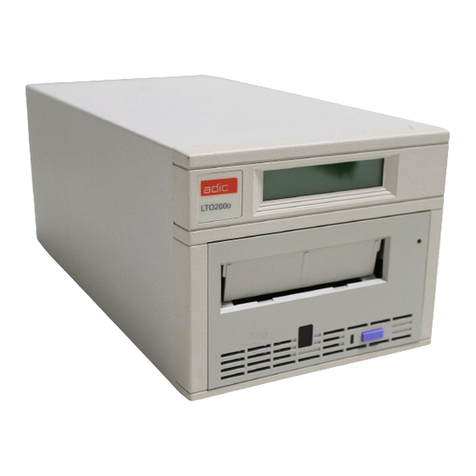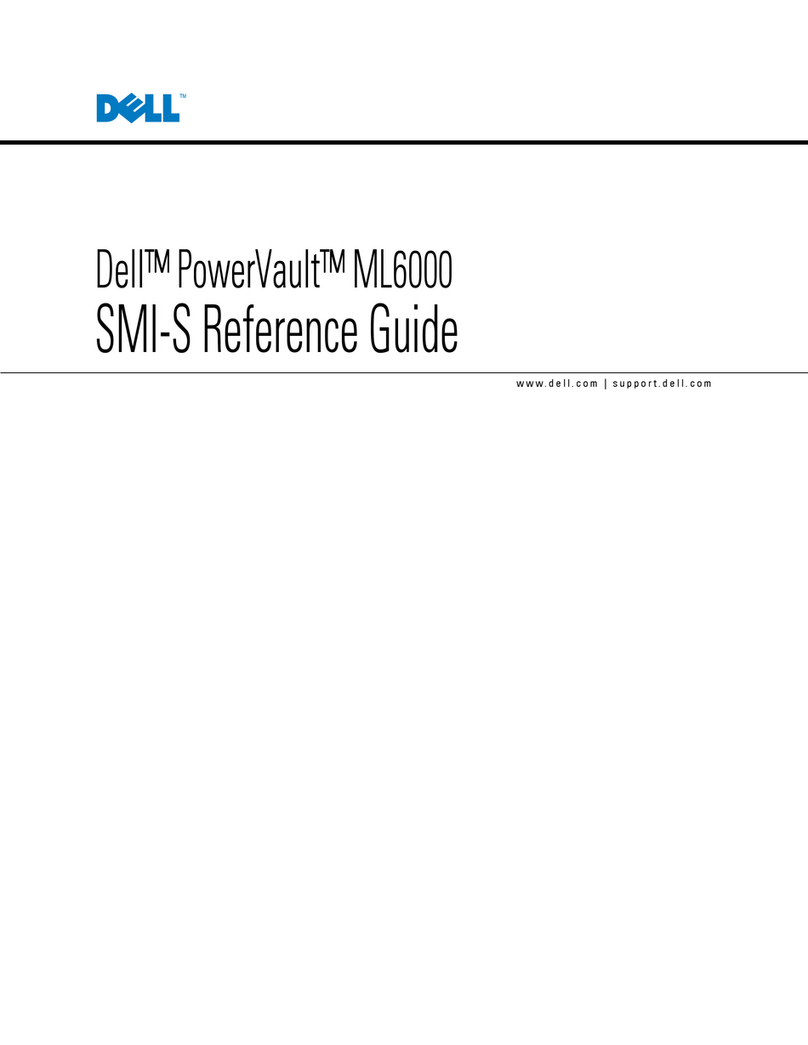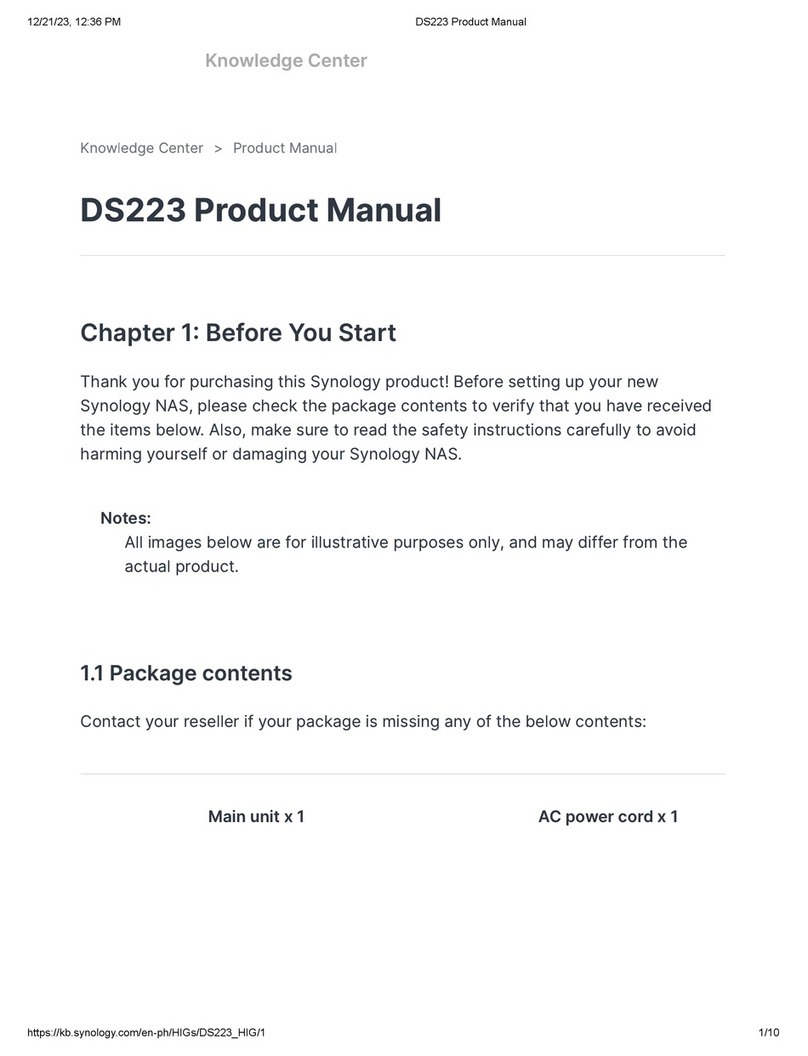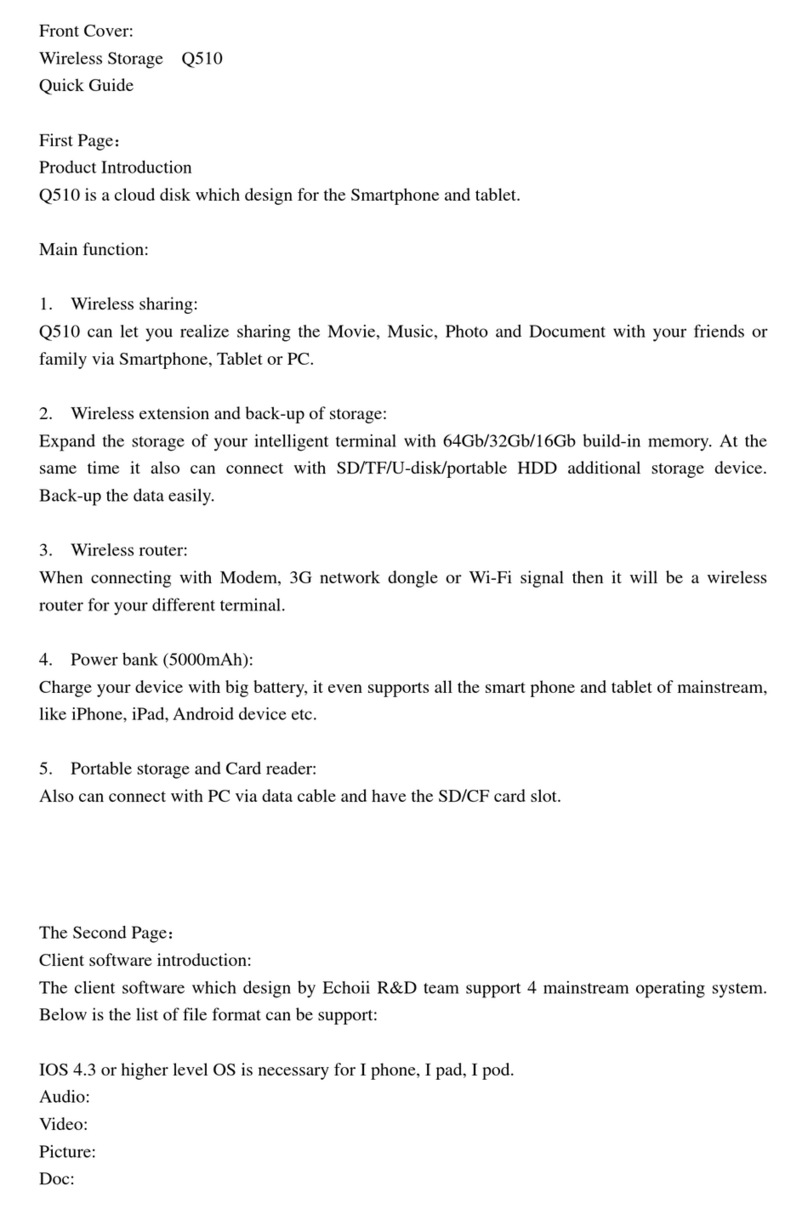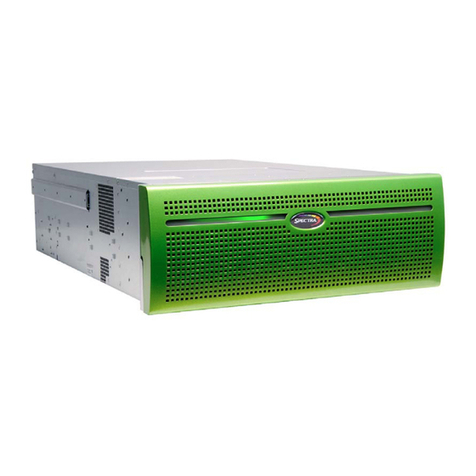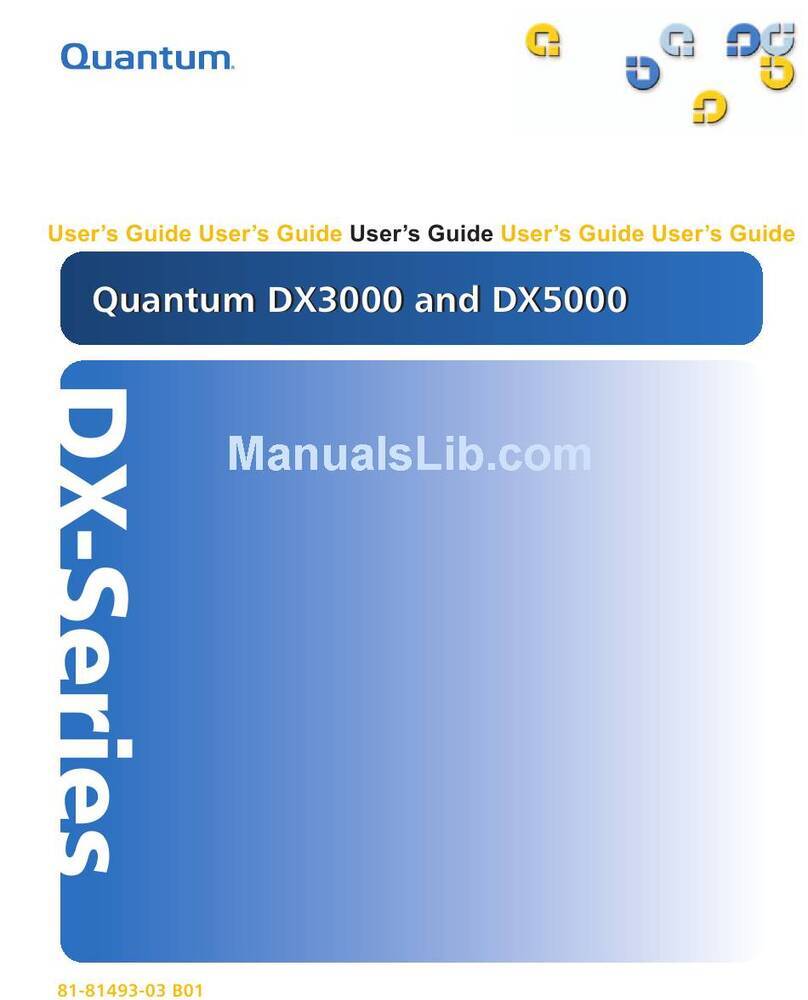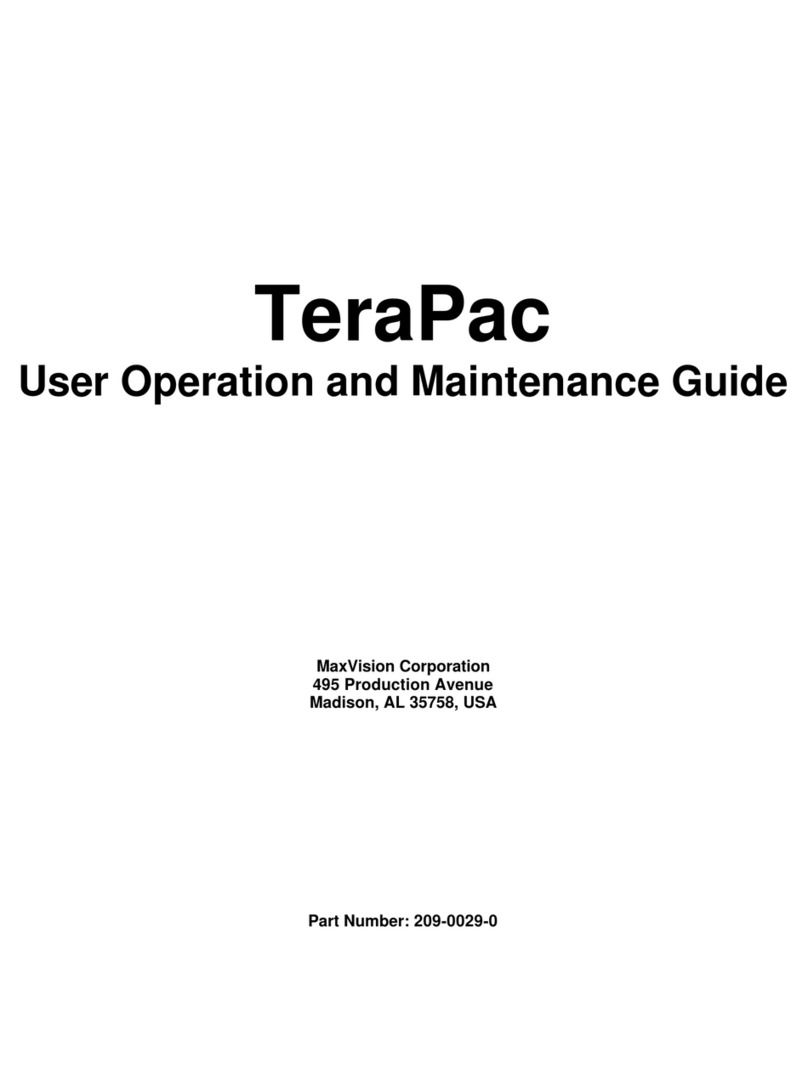HGST Ultrastar 7K2 Product manual

HGST Ultrastar
™
7K2
Capacity EnterpriseHDD
HUS722T2TALA604
HUS722T1TALA604
T
echnical Reference
Manual

Revision 1.1 (28 July 2016)
One MB is equal to one million bytes, one GB is equal to one billion bytes and one TB equals 1,000GB (one trillion
bytes) when referring to storage capacity. Accessible capacity will vary from the stated capacity due to formatting and
partitioning of the drive, the computer’s operating system, and other factors.
The following paragraph does not apply to any jurisdiction where such provisions are inconsistent with local law: THIS
PUBLICATION IS PROVIDED "AS IS" WITHOUT WARRANTY OF ANY KIND, EITHER EXPRESS OR IMPLIED,
INCLUDING, BUT NOT LIMITED TO, THE IMPLIED WARRANTIES OF MERCHANTABILITY OR FITNESS FOR A
PARTICULAR PURPOSE.
This publication could include technical inaccuracies or typographical errors. Changes are periodically made to the
information herein; these changes will be incorporated in new editions of the publication. There may be improvements or
changes in any products or programs described in this publication at any time. It is possible that this publication may
contain reference to, or information about, HGST products (machines and programs), programming, or services that are
not announced in your country. Such references or information must not be construed to mean that Western Digital
Corporation intends to announce such HGST products, programming, or services in your country. Technical information
about this product is available by contacting your local HGST product representative or on the Internet
at: support.hgst.com.
Western Digital Corporation may have patents or pending patent applications covering subject matter in this document.
The furnishing of this document does not give you any license to these patents.
© 2016 Western Digital Corporation or its affiliates.
Ultrastar, RAFF, Data Lifeguard and the HGST logo are registered trademarks or trademarks of Western Digital
Corporation or its affiliates in the U.S. and/or other countries. Other trademarks are the property of their respective
owners.
References in this publication to HGST-branded products, programs, or services do not imply that they will be made
available in all countries. Product specifications provided are sample specifications and do not constitute a warranty.
Actual specifications for unique part numbers may vary. Please visit the Support section of our website,
support.hgst.com, for additional information on product specifications. Pictures shown may vary from actual products.

HGST Ultrastar 7K2
Technical Reference Manual

Ultrastar 7K2
HGST Hard Disk Drive
Technical Reference Manual
4
T
ABLE OF
C
ONTENTS
1.0
DESCRIPTION AND FEATURES......................................................................................................................................7
1.1 General Description ..........................................................................................................7
1.2 Product Features...............................................................................................................7
2.0
SPECIFICATION....................................................................................................................................................................9
2.1 Performance Specifications ...............................................................................................9
2.2 CacheFlow™....................................................................................................................10
Write Cache..............................................................................................................10
Read Cache ..............................................................................................................10
2.3 Mechanical Specifications ...............................................................................................11
Physical Dimensions.................................................................................................12
Drive Mounting ........................................................................................................12
2.4 Electrical Specifications...................................................................................................13
Mean Current Requirements and Power Dissipation..................................................13
Power Savings Modes ...............................................................................................13
Input Voltage Requirements .....................................................................................15
Ripple ......................................................................................................................15
Power Connectors and Cables...................................................................................15
2.5 Environmental Specifications ..........................................................................................16
Shock and Vibration .................................................................................................16
Temperature and Humidity.......................................................................................17
Temperature Measurement.......................................................................................17
Cooling ....................................................................................................................18
Atmospheric Pressure...............................................................................................18
Acoustics .................................................................................................................18
RoHS (Restriction of HazardousSubstances) .............................................................18
2.6 Agency Approvals...........................................................................................................19
2.7 Full Model Number Specification.....................................................................................19
3.0
PRODUCT FEATURES..................................................................................................................................................... 20
3.1 SATA 6 Gb/s...................................................................................................................21
3.2 Time-Limited Error Recovery(TLER) .................................................................................21
3.3 Rotary Acceleration Feed Forward(RAFF)™.......................................................................22
3.4 Perpendicular Magnetic Recording (PMR) .........................................................................23
3.5 IntelliSeek.......................................................................................................................23
3.6 Native Command Queuing (NCQ) ....................................................................................23
3.7 Pre-emptive Wear Leveling (PWL) .....................................................................................23
3.8 MicroFemto Slider...........................................................................................................23
3.9 S.M.A.R.T. Command Transport(SCT)..............................................................................24
Write Same ...............................................................................................................24
Temperature Reporting ............................................................................................24
3.10 World Wide Name (WWN).................................................................................................24
3.11 Power Loss Data Protection .............................................................................................24
3.12 Hot Plug Support ............................................................................................................25
3.13 Active LED Status ............................................................................................................25
3.14 Fluid Dynamic Bearings (FDB) ..........................................................................................25
3.15 StaggeredSpinupandActivityIndication(SATAPowerPin
11) ...............................................25
Staggered Spinup .....................................................................................................25
Activity Indication.....................................................................................................25
3.16 48-bit Logical Block Addressing(LBA) ..............................................................................26
3.17
Self-Monitoring, Analysis, and Reporting Technology
(S.M.A.R.T.) ........................................26
3.18 Password Security Mode..................................................................................................27
Master and User Passwords ......................................................................................27
Security Levels..........................................................................................................27
3.19 Data Path Protection (DPP)...............................................................................................27
3.20 Manufacturing Option Block............................................................................................27

Ultrastar 7K2
HGST Hard Disk Drive
Technical Reference Manual
5
4.0
RELIABILITY ....................................................................................................................................................................... 28
4.1 Reliability Considerations ...............................................................................................28
4.2 Error Rates......................................................................................................................28
Error Rates ...............................................................................................................28
Environmental Interference.......................................................................................29
4.3 Reliability Features Set ....................................................................................................30
Data Lifeguard™*.....................................................................................................30
Thermal Management...............................................................................................30
Internal Environmental ProtectionSystem .................................................................30
Defect Management .................................................................................................30
Recoverable Errors ...................................................................................................30
Unrecoverable Errors ................................................................................................30
Automatic Defect Retirement ....................................................................................31
Error Recovery Process .............................................................................................31
5.0
ATA COMMAND SET ....................................................................................................................................................... 32
5.1 Host Interface Commands...............................................................................................32
ATA-7/ATA-8 Commands .........................................................................................32
SATA Commands ......................................................................................................33
Obsolete Commands ................................................................................................33
SCT Commands ........................................................................................................34
5.2 S.M.A.R.T. (B0h) ..............................................................................................................35
Read Attribute Values Sub-Command ........................................................................35
Supported Attributes ................................................................................................36
Read Log Sector........................................................................................................37
5.3 Identify Device (ECh) .......................................................................................................38
5.4 Set Features (EFh) ...........................................................................................................44
6.0
DRIVE HANDLING AND MAINTENANCE ................................................................................................................ 45
6.1 Unpacking ......................................................................................................................45
Handling Precautions................................................................................................45
Inspection of Shipping Container ..............................................................................45
Removal From Shipping Container ............................................................................45
Removal From Static Shielding Bag............................................................................46
Moving Precautions ..................................................................................................46
6.2 Hard Drive Installation ....................................................................................................46
Backplane Usage
.......................................................................................................47
6.3 Maintenance ...................................................................................................................48
7.0
GLOSSARY........................................................................................................................................................................... 49

Ultrastar 7K2
HGST Hard Disk Drive
Technical Reference Manual
6
LIST OF FIGURES
Figure 1 Mounting Dimensions.................................................................................................11
Figure 2 Drive Base Casting Thermocouple Location ................................................................17
Figure 3 Forced Airflow Direction .............................................................................................18
Figure 4 Dual Linear Sensor Rotational Acceleration Feed Forward (RAFF) ................................22
Figure 5 Manufacturing Option Block .......................................................................................27
Figure 6 SATA Cable Connections .............................................................................................46
Figure 7 Connector Pair Blind Mate Misalignment Allowable.....................................................47
Figure 8 Device Backplane Connection .....................................................................................47
LIST OF TABLES
Table 1 Physical Specifications ...................................................................................................9
Table 2 Performance Specifications............................................................................................9
Table 3 Device/Head Register ..................................................................................................16
Table 4 Maximum and Reliability Operating Temperature Limits (Drive Baseplate) ...................17
Table 5 Full Model Number Description....................................................................................19
Table 6 ATA-7/ATA-8 Command Opcodes .................................................................................32
Table 7 Optional Subcommands ...............................................................................................33
Table 8 Obsolete Command Opcodes.......................................................................................33
Table 9 SCT Action Codes.........................................................................................................34
Table 10 Definitions for the 512 Bytes. ....................................................................................35
Table 11 Supported Attributes..................................................................................................36
Table 12 Log Address Definition..............................................................................................37
Table 13 Identify Device Command ..........................................................................................38

Ultrastar 7K2
HGST Hard Disk Drive
Technical Reference Manual
7
D
ESCRIPTION AND
F
EATURES
General Description
HGST Ultrastar Capacity Enterprise hard drives offer up to 10 TB capacities and are available with SATA
interface. With the highest error tolerance and MTBF of any capacity-optimized drive, HGST Ultrastar
delivers the durability and reliability required in tightly packed vibration prone multi-drive systems. The
combination of high-capacity, peak performance and robust design make HGST Ultrastar drives ideal for
heavy workload environments, cloud storage, RAID arrays, external storage arrays, data warehousing,
and mining applications.
Product Features
Serial ATA (SATA) — Serial ATA (SATA) is the next generation bus interface for hard drives. It is
designed to replace Parallel ATA, and has many advantages including increased transfer rate,
improved signal integrity, enhanced data protection, and hot plug support.
Time-Limited Error Recovery (TLER) — TLER prevents hard drive error recovery fallout by
limiting the time the drive spends in error recovery, providing increased performance, improved
availability, and lower total cost of ownership in RAID arrays.
Rotary Acceleration Feed Forward (RAFF) — These drives employ RAFF technology to maintain
hard drive performance in high vibration environments through adaptive compensation of the servo
system.
Perpendicular Magnetic Recording (PMR) — With PMR technology the magnetization of each
data bit is aligned vertically to the spinning disk, rather than longitudinally as has been the case in
hard drive technology for decades. This enables more data on a given disk than is possible with
conventional longitudinal recording, and provides a platform for future expansion of hard drive
densities.
IntelliSeek™ — Key product feature that calculates optimum seek speeds to lower power
consumption, noise, and vibration.
Native Command Queuing (NCQ) — Performance of a random I/O workload can be improved
through intelligent re-ordering of the I/O requests so they read/write to and from the nearest available
sectors and minimize the need for additional disk revolutions or head actuator movement. This
improvement can be achieved though Native Command Queing (NCQ) , which is supported by these
hard drives.
Pre-emptive Wear Leveling (PWL) — This feature provides a solution for protecting the recording
media against mechanical wear. In cases where the drive is so busy with incoming commands that it
is forced to stay in a same cylinder position for a long time, the PWL control engine initiates forced
seeks so that disk lubricant maintains an even distribution and does not become depleted. This feature
ensures reliability for applications that perform a high incidence of read/write operations at the same
physical location on the disk.
MicroFemto Slider — These drives incorporate the next generation of femto slider form factor in
which the read/write head is mounted on the small, lightweight microfemto slider that allows the head
to move more quickly from track to track on the disk.
S.M.A.R.T. Command Transport (SCT) — The SCT Command Transport feature set provides a
method for a host to send commands and data to a device and for a device to send data and status to a
host using log pages.
World Wide Name (WWN) — The World Wide Name (WWN) defined in ATA/ATAPI-7 is a
modification of the IEEE extended unique identifier 64 bit standard (EUI-64) and is comprised of three
major components: naming authority, organizationally unique identifier (OUI) and serial number.
This product’s OUI is 0014EEh.

Ultrastar 7K2
HGST Hard Disk Drive
Technical Reference Manual
8
Reliability Features Set-Data Lifeguard™ — Representing the ongoing commitment to data
protection, Data Lifeguard includes features that enhance the drive’s ability to prevent data loss.
Data Lifeguard data protection utilities include thermal management, an environmental protection
system, and embedded error detection and repair features that automatically detect, isolate, and
repair problem areas that may develop over the extended use of the hard drive. With these enhanced
data reliability features, the drive can perform more accurate monitoring, error repair, and deliver
exceptional data security.
Power Loss Data Protection — Upon power loss, the drive utilizes stored spindle energy to back
up the HDD cache to on- board flash. This allows deeper write queues which boosts performance,
while minimizing data loss/corruption such as write splices that can occur during unexpected
power losses.
Hot Plug Support — SATA supports hot plugging (also known as “hot swapping”), the ability to
swap out a failed hard drive without having to power down the system or reboot. This capability
contributes to both data availability and serviceability without any associated downtime, making it a
critical feature for extending SATA into enterprise applications.
Active LED Status — The drive supports external LED requirements. It provides an activity LED
output which is ON during command execution and OFF otherwise.
Fluid Dynamic Bearings (FDB) — Bearing design that incorporates a layer of high-viscosity
lubricant instead of ball bearings in the hard drive spindle motor. As an alternative to conventional ball
bearing technology, FDB designs provide increased non-operational shock resistance, speed control,
and improved acoustics.
Staggered Spin-Up — Next generation SATA 6 Gb/s feature that allows the system to control
whether the drive will spin up immediately or wait until the interface is fully ready.
CacheFlow™ —This unique, multi-generation caching algorithm evaluates the way data is read from
and written to the drive and adapts “on-the-fly” to the optimum read and write caching methods.
CacheFlow minimizes disk seek operations and overheads due to rotational latency. CacheFlow
supports sequential and random write cache. With write cache and other CacheFlow features, the user
can cache both read and write data. The cache can hold multiple writes and collectively write them to
the hard disk.
48-bit Logical Block Addressing (LBA) — HGST SATA drives support both 48-bit and 28-bit LBA
and CHS-based addressing. LBA is included in advanced BIOS and operating system device drivers
and ensures high capacity disk integration.
Power Management — The drive supports the ATA and SATA power management command set,
allowing the host to reduce the power consumption of the drive by issuing a variety of power
management commands.
Self-Monitoring, Analysis, and Reporting Technology (S.M.A.R.T.) — S.M.A.R.T. enables a
drive’s internal status to be monitored through diagnostic commands at the host level and during
offline activities. S.M.A.R.T. devices employ data analysis algorithms that are used to predict the
likelihood of some near-term degradation or fault conditions. When used with a S.M.A.R.T.
application, the drive can alert the host system of a negative reliability status condition. The host
system can then warn the user of the impending risk of data loss and recommend an appropriate
action.
ATA S e c u r i t y — The drive supports the ATA Security Mode Feature set. The ATA Security Mode
feature set allows the user to create a device lock password that prevents unauthorized hard disk
access even if the drive is removed from the host computer. The correct password must be supplied to
the hard drive in order to access user data. Both the User and Master Password features are supported,
along with the High and Maximum security modes. The Master Password Revision code is also
supported. This feature varies by drive configuration and may not be available on all configurations.
Data Path Protection (DPP) — A feature that prevents possible electronic failures from corrupting
data on the hard drive.

Ultrastar 7K2
HGST Hard Disk Drive
Technical Reference Manual
9
S
PECIFICATION
Table 1 PhysicalSpecifications
Physical Specifications
1
HUS722T2TALA604 HUS722T1TALA604
Capacity 2 TB 1 TB
Interface SATA 6 Gb/s SATA 6 Gb/s
Physical Bytes Per Sector 512 512
Host Bytes Per Sector 512 512
User Sectors per Drive 3,907,029,168 1,953,525,168
Servo Type Embedded Embedded
Channel Recording Method LDPC–Low Density Parity Code
1
As used for storage capacity, one megabyte (MB) = one million bytes, one gigabyte (GB) = one billion bytes,
and one terabyte (TB) = one trillion bytes. Total accessible capacity varies depending on operating
environment. As used for buffer or cache, one megabyte (MB) = 1,048,576 bytes. As used for transfer rate
or interface, megabyte per second (MB/s) = one million bytes per second, and gigabit per second (Gb/s) =
one billion bits per second. Effective maximum SATA6 Gb/s transfer rate calculated according to the Serial
ATAspecification published by the SATA-IOorganization as of the date of this document. Visit www.sata-
io.org for details.
Performance Specifications
Table 2 Performance Specifications
Average Seek (without overhead)
- Read
- Write
7.7 ms average
8.3 ms average
Average Latency 4.2 ms (nominal)
Rotational Speed 7200 RPM (nominal)
Data Transfer Rate (maximum at OD)
1
- Maximum burst interface transfer rate
- Maximum sustained interface transfer rate
6 Gb/s
HUS722T2TALA604: 200 MB/s
HUS722T1TALA604: 184 MB/s
Buffer Size 128 MB
Spindle Start Time
- From Power-on to Drive Ready
2
15s average (FAST spinup mode)
18s average (STANDARD spinup mode)
Spindle Stop Time <10s average
Load/Unload Cycles
3
600,000 minimum
1
As used for transfer rate or interface, megabyte per second (MB/s) = one million bytes per second, and gigabit per
second (Gb/s) = one billion bits per second. Effective maximum SATA6 Gb/s transfer rate calculated according to the
Serial ATAspecification published by the SATA-IOorganization as of the date of thisdocument. Visit www.sata-io.org
for details.
2
Defined as the time from power-on to the setting of Drive Ready and Seek Complete including calibration.
Controlled unload at ambient condition.

Ultrastar 7K2
HGST Hard Disk Drive
Technical Reference Manual
10
CacheFlow™
CacheFlow is the unique, multi-generation disk caching system. It incorporates read cache with write
cache.
CacheFlow was designed to obtain maximum performance with today’s most popular operating systems
and applications. CacheFlow increases performance over prior caching algorithms by increasing the
number of times that requested data is in the cache. This reduces the number of host commands that
require actual media access thereby improving overall drive performance.
Typical applications perform a variety of access patterns, such as random, sequential, and repetitive.
CacheFlow is designed to dynamically adapt to the changes in access patterns that occur during the course
of application execution.
Random mode is the default operational mode for CacheFlow. Once CacheFlow detects a sequential access
pattern, it leaves random mode. CacheFlow also performs predictive read operations to increase the
probability that data requested in future commands already exists in the cache.
CacheFlow partitions the buffer into multiple segments to allow for the fact that applications may access
multiple non-contiguous areas on the disk. CacheFlow tracks the amount of valid data in each segment
and controls the deallocation of segments to maximize drive performance.
Write Cache
CacheFlow is designed to improve both single and multi-sector write performance by reducing delays
caused by seek time and rotational latency.
The write cache adaptively detects random and sequential access patterns during application execution.
If a defective sector is found during a write cache operation, that sector is automatically relocated before the
write occurs.
Read Cache
CacheFlow implements a multiple segment read cache. Cache segments are assigned to read commands as
they are received from the host.
Each read segment consists of pre and post read sectors in addition to the host-requested sectors. This
maximizes the amount of cache data in the drive’s buffer, thereby increasing the likelihood of cache hits and
improving overall performance.

Ultrastar 7K2
HGST Hard Disk Drive
Technical Reference Manual
11
Mechanical Specifications
Figure 1 shows the mounting dimensions and locations of the screw holes for the drive.
Figure 1 Mounting Dimensions

Ultrastar 7K2
HGST Hard Disk Drive
Technical Reference Manual
12
Physical Dimensions
English Metric
Dimension Tolerance Dimension Tolerance
Height
1.028 inches MAX 26.1 mm MAX
Length
5.787 inches MAX 147.0 mm MAX
Width
4.00 inches ±0.01 inch 101.6 mm ±0.25 mm
Weight
1.41 pounds ±10% 0.64 kg ±10%
Drive Mounting
Use either the four bottom screws or at least four of the side mounting screws to rigidly support the drive
and prevent vibration. Some adaptor frames may not have the mechanical design structure capable of
mounting the drive to meet the specified shock and vibration requirements.
The hard drive itself does not provide electrical isolation between mounting locations and drive ground
connection. If electrical isolation is required, the system designer or integrator would be responsible for
providing a solution.
If your system does not support hot plugging (see “Hot Plug Support on page.25), it must be turned off and
unplugged before installing your hard drive.
You can mount the hard drive in the X, Y, or Z axis, depending upon the physical design of your system.
For best results, mount the drive with all four screws grounded to the chassis. If all four screws are not
used, see "Grounding" on page.12.
The hard drive should be mounted to the chassis using four 6-32 screws. Recommended screw torque is 5
in-lb. Maximum screw torque is 10 in-lb.
The PCBA and HDA grounds are always connected together in the drive and cannot be disconnected. The
drive mounting screws, unless intentionally isolated, will provide additional ground connections between
the HDA and the system chassis. If the drive isn't grounded via mounting screws as described under “Hard
Drive Installation” on Page.46, there may be increased electrical emissions (EMI).
CAUTION: Screws that are too long can damage the hard drive. Hard drive screw penetration
can differ between products depending upon hard drive design. HGST’s minimum design
criteria is to always meet the SFF 8301 industry standard specification. The industry standard as
defined in the SFF 8301 specifies a maximum of 3 mm screw penetration, and for a minimum of
2.4 mm of thread engagement from both the screw and the hard drive.
See Figure 1 for allowable fastener penetration for this product family.

Ultrastar 7K2
HGST Hard Disk Drive
Technical Reference Manual
13
Electrical Specifications
Mean Current Requirements and Power Dissipation
Operating Mode
Mean Current
1, 2
Mean Power
1,2
12 VDC
5VDC
Spinup Standard
3
1710 mA (max)
735 mA
520 mA (peak)
295 mA -
Spinup Fast 2385 mA (max)
1350 mA
550 mA (peak)
295 mA -
Spinup Green 1190 mA (max)
510 mA
505 mA (peak)
295 mA -
Operational Peak Current 1545 mA (peak)
1600 mA (max)
870 mA (peak)
860 mA (max) -
Sequential Read 315 mA 720 mA 7.4W
Sequential Write 315 mA 730 mA 7.4W
Random Read/Write 485 mA 455 mA 8.1W
Idle 315 mA 430 mA 5.9W
1
When running at 3 Gb/s or as a single ported device, power will be lower than the value listed.
2
All
peak and mean values are typical (measured at 25°C) except where specified as maximum.
3
Default
spinup mode when not otherwise overridden.
Mode
Mean Current
2
Mean Current
2
Mean Power
2
DIPMOff
12 VDC
5VDC
Idle_A 310 mA 290 mA 5.2W
Idle_B 295 mA 290 mA 5.0W
Idle C 110 mA 290 mA 2.8W
Standby Y 110 mA 290 mA 2.8W
Standby_Z 10 mA 285 mA 1.5W
1
When running at 3 Gb/s or as a single ported device, power will be lower than the value listed.
2
All peak and mean values are typical (measured at 25°C) except where specified as maximum.
Power Savings Modes
This product is capable of supporting both legacy ATA Advanced Power Management (APM) mode and
the new more extensive Extended Power Conditions (EPC) standards. Unless otherwise specified, the
default disk drive is shipped with the EPC mode enabled, and the legacy APM modes can be enabled via
the Set Feature command (Feature ‘4A’h, Sub Command ‘04’h). These two power savings
implementations are exclusively used, and thus not simultaneously supported.
This drive supports the legacy ATA power management commands that lower the average power
consumption of the hard drives. For example, to take advantage of the lower power consumption modes
of the drive, an energy efficient host system could implement a power management scheme that issues a
Standby Immediate command when a host resident disk inactivity timer expires. The Standby Immediate
command causes the drive to spin down and enter a low-power mode. Subsequent disk access commands
would cause the drive to spin up and execute the new command. To avoid excessive wear on the drive due
to the starting and stopping of the HDA, set the host’s disk inactivity timer to no shorter than ten minutes.

Ultrastar 7K2
HGST Hard Disk Drive
Technical Reference Manual
14
HGST drives additionally support T13 Extended Power Conditions, as stated in the ACS-2 specification.
Power savings features, normally only available in notebook drives, are now included in our Enterprise
products. With these features enabled, drive power can be reduced automatically via inactivity timer, or
manually via Host command. In timer based mode, the drive automatically starts reducing its power based
on inactivity of commands from the Host. With progression into the idle states, the drive saves more and
more power, but consequently takes longer to recover and respond to Host media commands.
A summary of the new low power modes and what the drive does in each mode is shown below:
Idle_A
Heads Floating Over Disk
<10 ms recovery
Idle_B
Heads Parked
<650 ms recovery
Idle_C
Heads Parked, Reduced RPM
3-15 sec recovery (see the Power Conditions Log for the drives actual recovery time)
Idle_c recovery current limited to the maximum user mode power.
Standby_Y
Heads Parked, Reduced RPM
3-15 sec recovery (see the Power Conditions Log for the drives actual recovery time)
Standby_y recovery can use full spin up power.
Standby_Z
Traditional standby
Drive not spinning
Recovery is similar to a typical TTR (Time To Ready) for the HDD
HGST has added the Power Condition Log, which defines the support, enable bits, and timers for all
power conditions. The power management timers start running after all Host commanded drive activity is
complete, and will run during drive background operations, but do not take effect until those background
operations are completed. The timer expiration min/max values are visible to the Host/ Initiator, but are
rounded silently by the drive to its internal min/max values. The timer enable and timer values can be
marked independently as changeable. Please note that some Host Operating Systems may be unable to
take advantage of the inactivity timers, as they constantly access the Drive with writes to update a time
stamp. In these situations it is advisable to extend the Idle_B timer value beyond the time interval of the
writes, or to disable the timer entirely. Please see your HGST representative for help with questions about
these features.

Ultrastar 7K2
HGST Hard Disk Drive
Technical Reference Manual
15
Input Voltage Requirements
The input voltage requirements are +5.0V ± 5% and +12.0V ± 10%.
Ripple
+12VDC +5 VDC
Maximum Frequency 200 mV (double amplitude) 0-30 MHz 100 mV (double amplitude) 0-30 MHz
Power Connectors and Cables
Serial ATA Connectors
For information on SATA data connectors, including the pin definitions of the SATA connectors and the
corresponding signal names and signal functions, refer to the latest SATA specification available for
download at www.serialata.org.
Cabling Requirements for Serial ATA
The SATA cable consists of four conductors in two differential pairs. The cable may also include drain
wires to be terminated to the ground pins in the SATA cable receptacle connectors. See the SATA
specification for cable specifications. The cable's maximum length is one meter.

Ultrastar 7K2
HGST Hard Disk Drive
Technical Reference Manual
16
Environmental Specifications
Shock and Vibration
Table 3 Device/Head Register
Shock
Operating 30G, 2 ms read/write)
65G, 2 ms (read)
Non-operating (2 ms) 300G
Note: Half-sine wave, measured without shock isolation and without non-recoverable errors.
Rotational Shock Non-Operating
Amplitude 20K rad/sec
2
Duration 2 ms
Vibration
Operating Swept Sine: 20-300 Hz, 0.75G (0 to peak)
Sweep Rate: 0.5 octave/minute minimum
Random: 0.004 g
2
/Hz (10-300 Hz)
Non-operating Swept Sine: 20-500 Hz, 4.0G (0 to peak)
Sweep Rate: 0.5 octave/minute minimum
Random: 0.05 g
2
/Hz (10-300 Hz)
Rotational Vibration
12.5 rad/sec
2
based on the following PSD profile maintaining <20% performance degradation:
Frequency (Hz) 20 200 300 900 1400 2000
(Rad/sec
2
)
2
/Hz 0.035 0.035 0.2 0.2 0.002 0.002
Operating Vibration
Drives are tested by applying a random excitation in each linear axis, one axis at a time. The drive incurs
no physical damage and no hard errors while subjected to continuous vibration not exceeding the level
listed in Table 3 Operating performance may degrade during periods of exposure to continuous vibration.
Non-Operating Vibration
Note: This specification applies to handling and transportation of unmounted drives.
Drives are tested by applying a random excitation in each linear axis, one axis at a time. The drive incurs
no physical damage when subjected to continuous vibration not exceeding the level listed in Table 3.
Packaged Shock and Vibration
The shipping packaging is designed to meet the National/International Safe Transit Association (N/ ISTA)
standards for packaged products. The drive incurs no physical damage when subjected to the N/ ISTA
standards.

Ultrastar 7K2
HGST Hard Disk Drive
Technical Reference Manual
17
Temperature and Humidity
Temperature & Humidity
Operating ambient temperature
1
5C to 60C
Max base casting temperature
2
60C
S.M.A.R.T. temperature value reported within ±3°C
Humidity 5-95% RH non-condensing
30C (maximum wet bulb)
Thermal Gradient 20C/hour (maximum)
Humidity Gradient 20%/hour (maximum)
Non-operating Temperature -40C to 70C
Humidity 5-95% RH non-condensing
35C (maximum wet bulb) for up to 21 days
3
Thermal Gradient 30C/hour (maximum)
Humidity Gradient 20%/hour (maximum)
1
Ambient temperature is defined as the temperature of the environment immediately surrounding the drive.
The system environment must allow sufficient air flow to limit maximum surface temperatures as defined.
2
See Figure 2 Actual drive case temperature should be below 60°C and within the 5-60°C operating
ambient temperature.
3
Unless still in HGST’s factory sealed bag which allows up to 40C without limit.
Temperature Measurement
Drive component temperatures measured at the drive baseplate thermocouple location must remain within
the limits specified in Table 4. Figure 2 shows the temperature measurement location. Sustained operation
at temperatures in excess of the reliability values degrades the MTBF rating. Short excursions up to, but not
exceeding, the maximum values will not affect the MTBF rating. Maximum component temperature ratings
must not be exceeded under any operating condition, or product warranty will be void.
Table 4 Maximum and Reliability Operating Temperature Limits (Drive Baseplate)
Component Location Maximum Reliability
1
Drive baseplate See Figure 2 60°C (140°F) 40°C
1
Sustained operation at temperatures in excess of the reliability values degrades the MTBF rating.
Figure 2 Drive Base Casting Thermocouple Location

Ultrastar 7K2
HGST Hard Disk Drive
Technical Reference Manual
18
Cooling
If forced air cooling is required, the recommended airflow from one or more fans as indicated in Figure 3.
Figure 3 Forced Airflow Direction
Atmospheric Pressure
Acoustics
TYPICAL SOUND POWER LEVEL
1
Idle Mode (average dBA)
2
25
Seek Mode (average dBA) 28
1
Measured per ECMA-74/ISO 7779.
2
No audible pure tones.
RoHS (Restriction of HazardousSubstances)
HGST hard drive products manufactured and sold worldwide after June 8, 2011, meet or exceed
Restriction of Hazardous Substances (RoHS) compliance requirements as mandated by the RoHS
Directive 2011/65/EU. RoHS aims to protect human health and the environment by restricting the use of
certain hazardous substances in new equipment, and consists of restrictions on lead, mercury, cadmium,
and other substances.
Altitude
Operating
Non-
-1,000 feet to 10,000 feet (-305M to 3,050M)
-1,000 feet to 40,000 feet (-305M to 12,200M)

Ultrastar 7K2
HGST Hard Disk Drive
Technical Reference Manual
19
Agency Approvals
Ultrastar 7K2 Regulatory Number (R/N): 800032
These drives meet the standards of the following regulatory agencies:
Underwriters Laboratories: Bi-National UL Standard CAN/CSA-C22.2 No. 60950/UL 60950-
1. Standard for Safety of Information Technology Equipment, including Electrical Business
Equipment (File E101559).
TUV NORD CERT GmbH: IEC 60950-1 per EN 60950-1, Standard for Safety of Information
Technology Equipment, including Electrical Business Equipment. IEC 60065. Standard of Safety for
Audio, Video, and Similar Electronic Apparatus.
CE Compliance for Europe: Complies with EN 55022: 2010 RF/ Conducted Emissions and EN
55024: 2010 Immunity requirements. Including EU Directive 2011/65/EU RoHS II requirements.
RCM Compliance for Australia: Verified to comply with AS/NZS CISPR 22 for RF Emissions as
required by the Australian Communications Authority.
Korean KC Mark: Registered as a Class-B product with the South Korean Ministry of Information
and Communication.
Taiwan BSMI EMI Certification: Certified as a Class-B product with the Bureau of Standards
Metrology and Inspection (BSMI).
Full Model Number Specification
Table 5 below provides a summary specification of the model number suffix for this product platform.
Table 5 Full Model NumberDescription
Model Number Format
ID
Product Brand
RPM
Description
HUS722TxTALA604 YCB Ultrastar 7K2 7200 Ultrastar 7K2 128 MB SATA 6 Gb/s

Ultrastar 7K2
HGST Hard Disk Drive
Technical Reference Manual
20
P
RODUCT
F
EATURES
SATA 6 Gb/s
Time Limited Error Recovery (TLER)
Rotary Acceleration Feed Forward (RAFF)™
Perpendicular Magnetic Recording (PMR)
IntelliSeek™
Native Command Queuing (NCQ)
Pre-Emptive Wear Leveling (PWL)
MicroFemto Slider
S.M.A.R.T. Command Transport (SCT)
World Wide Name (WWN)
Hot Plug Support
Active LED Status
Fluid Dynamic Bearings (FDB)
Staggered Spin-Up and Activity Indication (SATA Power Pin 11)
48-bit Logical Block Addressing (LBA)
Self-Monitoring, Analysis, and Reporting Technology (S.M.A.R.T.)
Security Mode
Data Path Protection (DPP)
Manufacturing Option Block
Table of contents
Other HGST Storage manuals
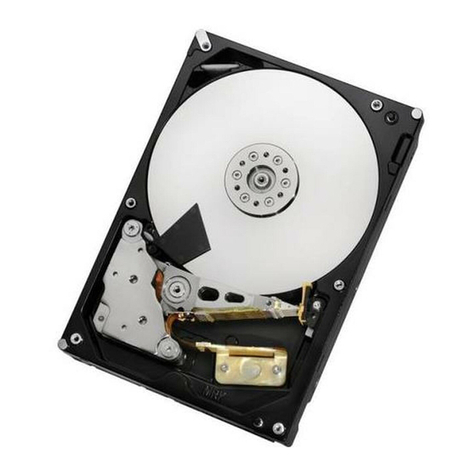
HGST
HGST HUS724040ALS640 User manual

HGST
HGST Ultrastar Data102 User manual

HGST
HGST Travelstar 2.5-Inch Mobile 7200 RPM 7mm... User manual
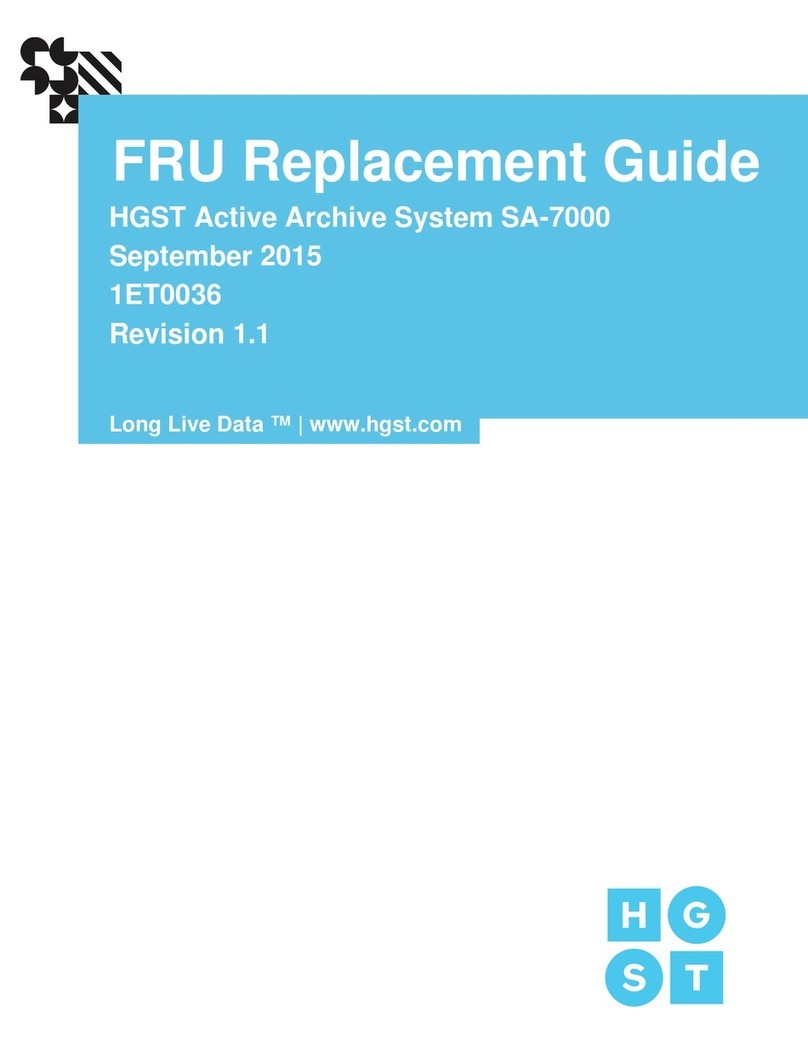
HGST
HGST SA-7000 Parts list manual

HGST
HGST HUS724040ALE640 User manual

HGST
HGST CinemaStar C5K1000.B Product manual

HGST
HGST Travelstar Z5K500.B Product manual
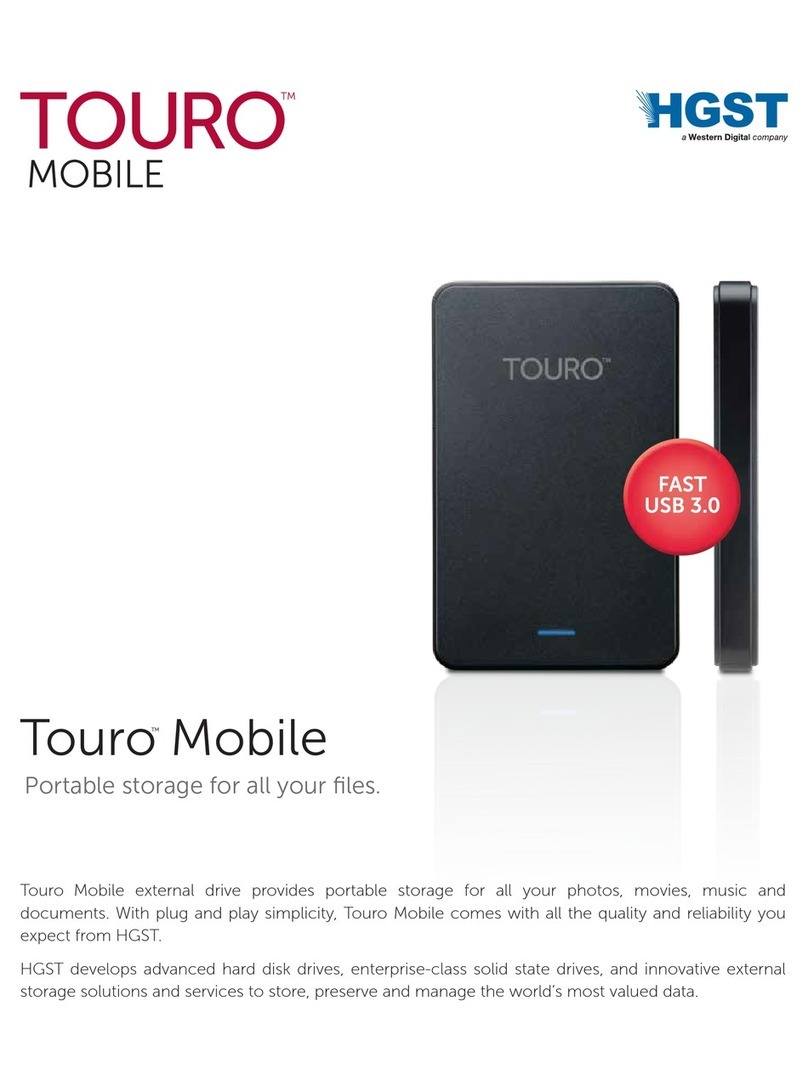
HGST
HGST Touro Mobile User manual
